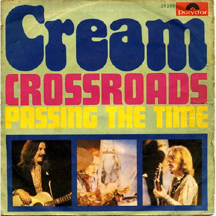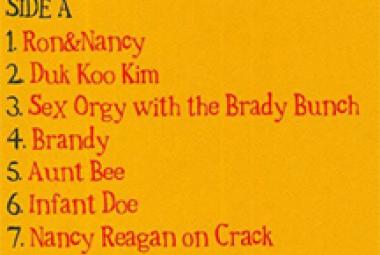“Cross Road Blues” (more commonly known as “Crossroads”) is a blues song written and recorded by American blues artist Robert Johnson in 1936. Johnson performed it as a solo piece with his vocal and acoustic slide guitar in the Delta blues-style. The song has become part of the Robert Johnson mythology as referring to the place where he supposedly sold his soul to the Devil in exchange for his musical talents, although the lyrics do not contain any specific references. “Crossroads” became a part of Cream’s repertoire when Clapton began performing with Jack Bruce and Ginger Baker in July 1966. Their version features a prominent guitar riff with hard-driving, upbeat instrumental backing and soloing. Rather than using arrangements that followed Johnson’s original song closely, Clapton envisioned “Crossroads” as a rock song. (More from Wikipedia)
To some extent at least, the formation of Cream grew out of an English all-star band called the Powerhouse that was assembled solely to provide music for a 1966 compilation album called What’s Shakin’ that announced the arrival of Elektra Records in Great Britain. Bandmembers included Eric Clapton (guitar); Jack Bruce (bass guitar) and Paul Jones (harmonica) from Manfred Mann; Stevie Winwood (lead vocals) and Pete York (drums) from the Spencer Davis Group; and Ben Palmer (piano), who had briefly been in a band with Clapton in 1965. Ginger Baker was originally slated to be the drummer for the group but was unavailable. This remarkable line-up included two members of Cream (and almost all three), plus two future members of Blind Faith (Clapton and Winwood). What’s more, Cream later recorded two of the only three songs ever made by this assemblage, Robert Johnson’s “Crossroads” and an instrumental called “Steppin’ Out” that Eric Clapton had previously performed while in John Mayall & the Bluesbreakers. The artist on these two songs was listed as Eric Clapton & the Powerhouse. The third song, “I Want to Know” was credited to MacLeod, an evident reference to Paul Jones’ wife Sheila MacLeod; Ten Years After included “I Want to Know” on their first album, Ten Years After that was released in late 1967.
(May 2014)















